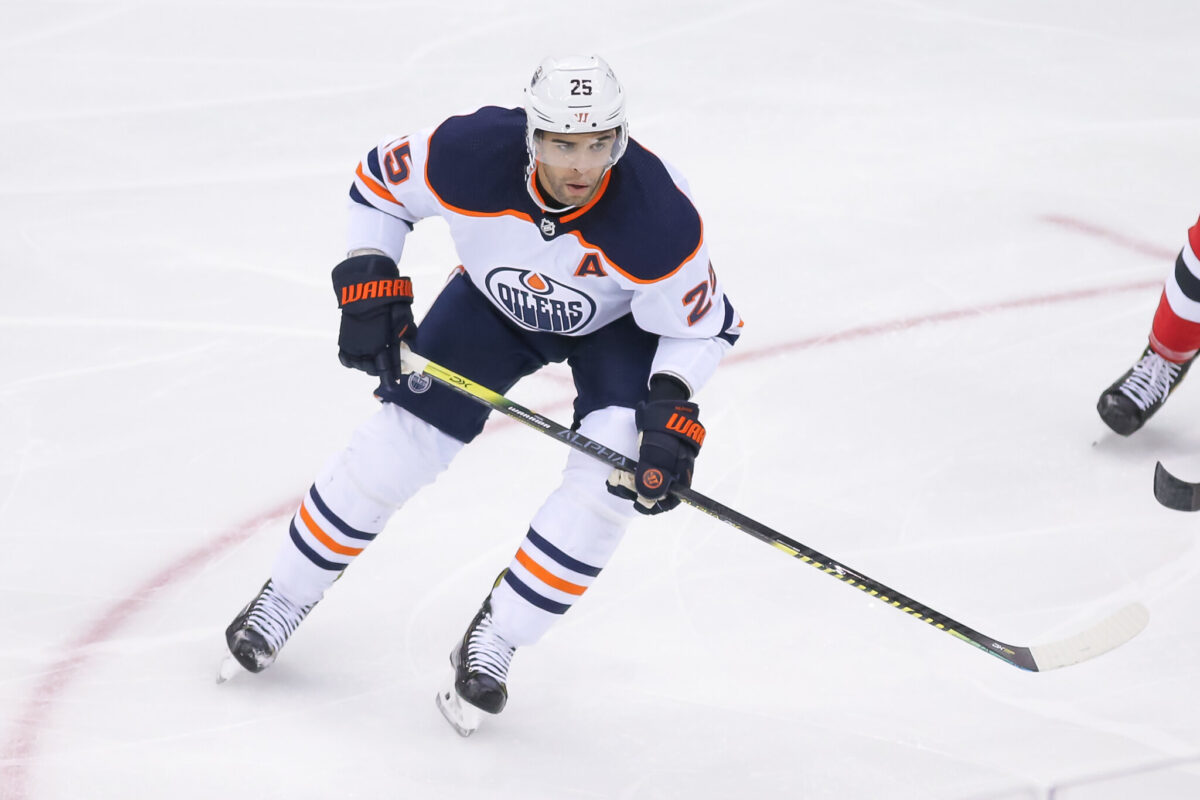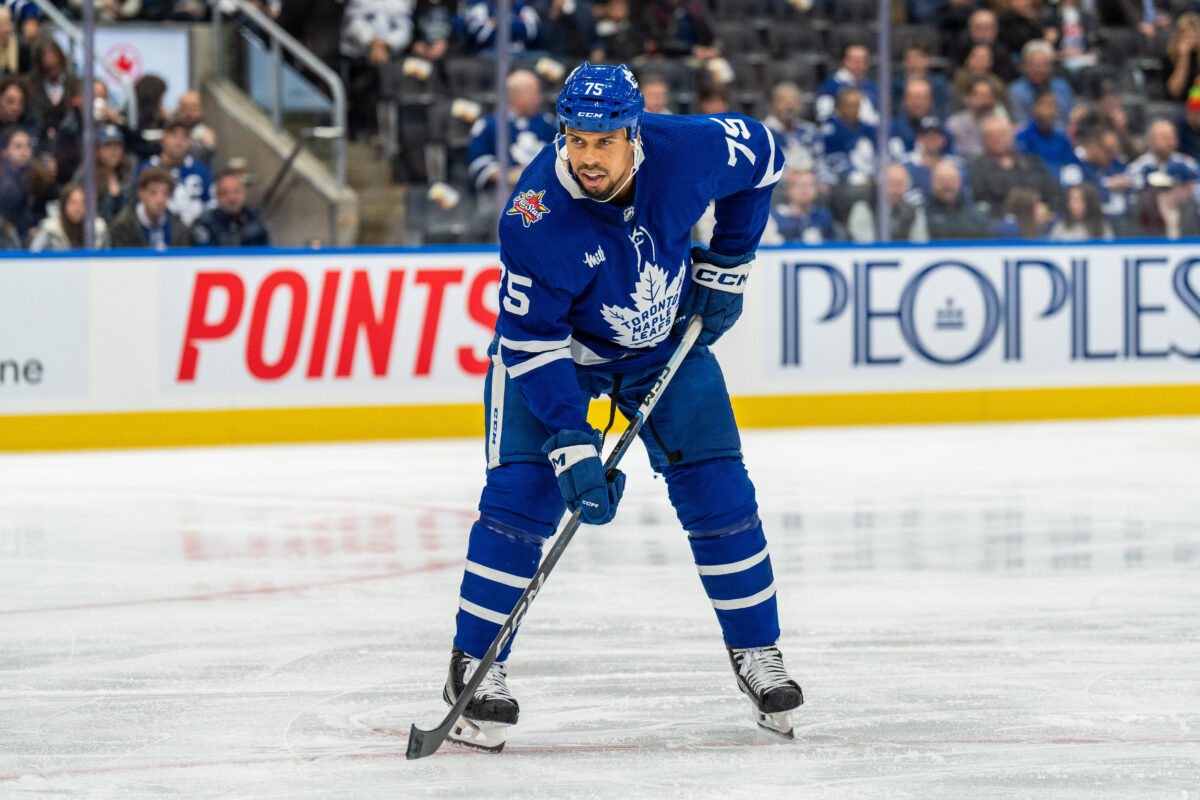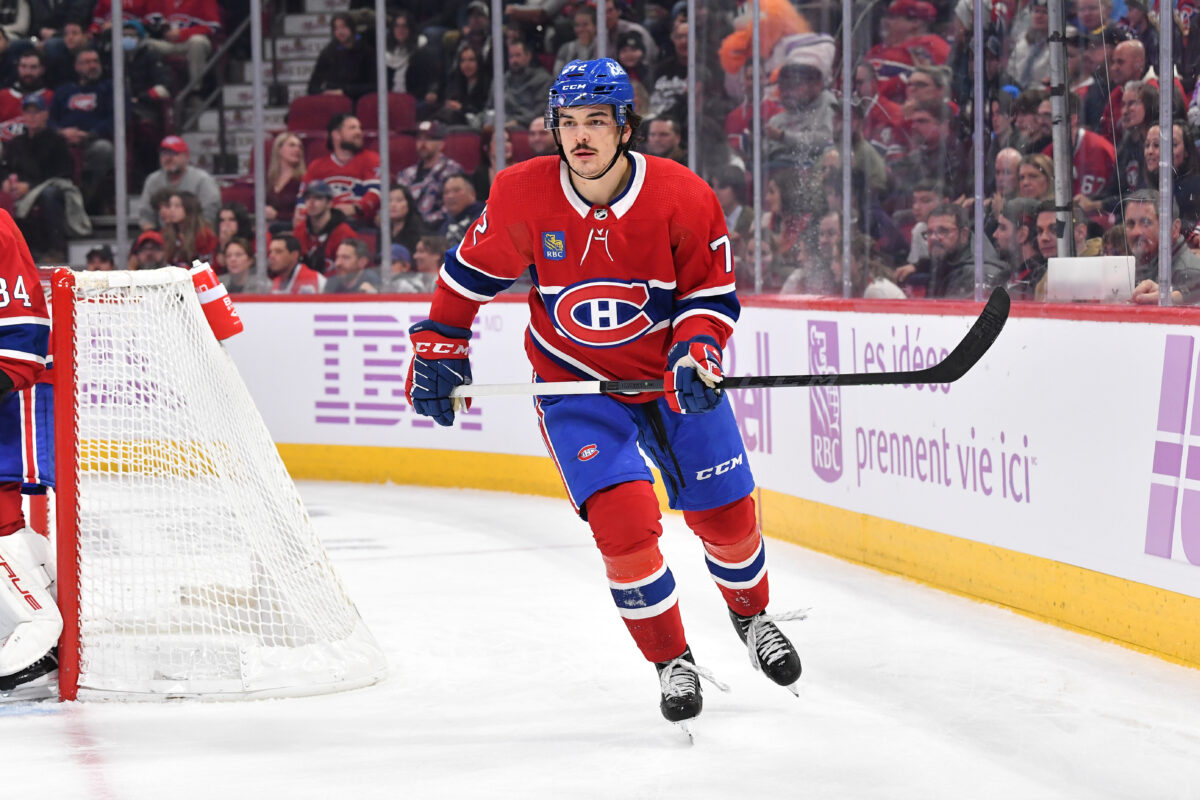The NHL Department of Player Safety announced a five-game suspension for Toronto Maple Leafs forward Ryan Reaves following an illegal hit to the head of Edmonton Oilers defenceman Darnell Nurse during Saturday’s game. The decision reignited the debate over where the league draws the line between physicality and player safety—a tightrope the NHL constantly walks.
How Did the Reaves/Nurse Incident Take Place?
The game was in its early stages when Nurse, a key player on Edmonton’s blue line, became vulnerable while attempting to play the puck. Reaves delivered a high, forceful check to Nurse, with the principal point of contact being the head. The force and angle of the collision resulted in Nurse immediately leaving the game. He was woozy and struggled to reach his feet like a stunned prize fighter.
Related: Maple Leafs’ Rising X-Factors Knies & McMann Having a Big Impact
The immediate fallout was concerning. Nurse logged only 7:45 of ice time before leaving the game, and his absence left Edmonton shorthanded. Elliotte Friedman later reported that Nurse walked around post-game and joked with trainers—an encouraging sign. Still, his condition remains uncertain, and the Oilers might need to call up reinforcements from the American Hockey League (AHL).
According to the NHL DoPS, the hit was both avoidable and unnecessary. Nurse’s positioning did not significantly change before the play, meaning Reaves could have opted for a safer route to deliver his body check. The result was that Nurse sustained an injury, a critical factor in the decision to suspend Reaves.

The league further justified the suspension by pointing to Reaves’ history of disciplinary issues, which includes previous suspensions and fines for reckless hits. The combination of an illegal play, resulting injury, and Reaves’ track record culminated in a severe penalty.
Related: NHL Rumors: Oilers, Maple Leafs, Penguins, Blackhawks, Salary Cap
Reaves, often described as an old-school enforcer, plays a role that has grown increasingly rare in today’s NHL. While his intent might have been to energize his team, the hit crossed into illegal territory. It raises questions about whether players in Reaves’ role must adapt to the modern game’s faster pace and stricter safety standards.
Physicality, Its Place in NHL Hockey, and the Balancing Act
Reaves is known for his physical style of play, which has long been a hallmark of his career. Players like him are often celebrated for their ability to intimidate opponents and set a tone for their team. However, incidents like this raise questions about how far physicality can—or should—go in the modern NHL.
Hockey’s roots are deeply tied to physical play, but the increasing (and correct) focus on player safety has reshaped how those elements are enforced. Hits once considered “part of the game” are scrutinized, primarily when they result in head contact or injuries. For enforcers like Reaves, this evolution represents a challenging adjustment. He hasn’t made it.

The NHL’s approach to balancing physicality with safety remains a contentious issue. Fans and players value the intensity and emotion that physical play brings to the game. At the same time, the league’s growing awareness of long-term injuries, particularly concussions, has prompted stricter enforcement of dangerous plays.
Reaves’ suspension underscores this balancing act. The NHL must continue to hold players accountable for reckless actions while finding ways to preserve the grit and energy that make hockey unique. As debates over hits like these persist, one thing is clear: the league’s handling of such incidents will shape the sport’s future.
Related: Maple Leafs’ Robertson & Tavares Having Very Different Paths in Toronto
This case is another reminder that while hockey thrives on its hard-nosed nature, safety must remain a priority. For Reaves, the suspension offers time to reflect on how he can adapt his aggressive style to align with the evolving rules of the game.
The NHL’s Approach to Head Safety
Under current NHL rules, hits to the head are subject to significant scrutiny. Reaves’ hit is the play the league claims it wants to eliminate. However, critics argue that the current disciplinary system doesn’t act as a strong enough deterrent for players who regularly toe the line.

(Photo by Francois Lacasse/NHLI via Getty Images)
Supplementary discipline, such as fines or suspensions, might discourage repeat offences. However, the inconsistency of penalties often undermines their effectiveness. Would a harsher penalty system reduce incidents like this? The debate continues, with some advocating for stricter rules while others fear it could diminish hockey’s physical nature. The nuances of the event get to the core of what makes hockey so exciting and where the line might need to be drawn to keep it that way.
The NHL’s Player Culture and Ethos of Accountability
Reports indicate that Reaves apologized to Nurse after the game, highlighting hockey’s unique culture of accountability. Despite the brutal physicality of the sport, players often respect one another off the ice, which can sometimes mitigate the fallout from dangerous plays. That said, an apology later doesn’t change the facts of the incident.
As well, apologies don’t undo the damage. Hockey culture often values toughness over caution, and the emphasis on “playing hard” can sometimes blur the line between legal and illegal actions. Reaves’ apology might soften perceptions but doesn’t absolve his responsibility for the hit.
The Bottom Line for the Oilers, Maple Leafs, and NHL
The collision between Reaves and Nurse underscores the ongoing struggle to balance hockey’s physicality with player safety. Does the NHL need a stricter approach to head safety, or does the league already walk a fine enough line?
